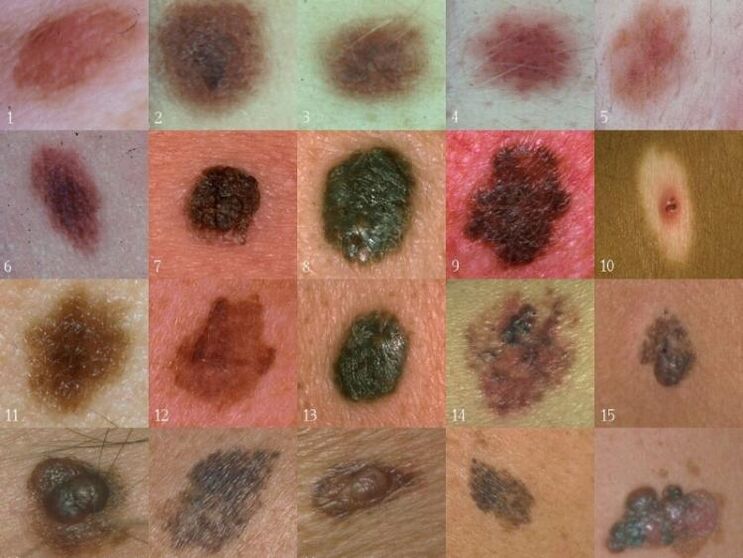
Some types of human papillomavirus (HPV) pass through damaged areas of the skin, causing cells to grow rapidly in the top layer. The result is warts. There are many types of warts. They can appear anywhere on the skin and can vary greatly in size and color. Usually, warts do not cause serious problems, they go away on their own. However, in some cases, it is valuable to consult a doctor and have them removed.
The types of warts on the body are usually divided according to their location.
Types of warts
- Vulgar (general)
- Plantar,
- Flat (youth),
- Genital warts (genital warts)
- Filiform,
- Aging (seborrheic keratomas).
Ordinary warts
Vulgar or common - this is the most common type of these tumors. They are rough on the surface of small nodules (up to 10 mm). They protrude very little from the surface of the skin and do not hurt at all. Normal warts can appear anywhere on the body, but are most common on the neck, head, elbows, or knees.
Another feature of normal warts is that "major" warts appear next to large warts.
Plantar
This is one of the common types of warts, it is also called "Spitz". It is located on the skin of the heel, usually on the side of the heel. It consists of several papillae surrounded by a roller and connected to each other. Sometimes Spitz looks like a dense thorn growing on the skin. Occasionally, foot warts can grow on the skin. Then they look like a fossa surrounded by a roller with protruding papillae. Warts on the feet often cause discomfort, as they cause discomfort and even pain when pressed.
Their appearance can be provoked by tight or uncomfortable shoes. In such shoes, areas of the skin are damaged, making it vulnerable to the entry and development of human papillomavirus.
Flat
Flat warts are more common at an early age, in children and adolescents, and are therefore called youth. These are small structures (usually about 3 mm). They can be round or irregular. The surface of young warts is smooth and even. The color is usually the same as the skin, and sometimes flat warts can have an orange color. This type of wart can appear anywhere on the skin, but their "favorite" areas are the face and hands.
Flat warts usually do not cause physical discomfort and disappear over time. However, when placed in a prominent place, it causes aesthetic discomfort, so patients often turn to doctors and cosmetologists to remove them.
Genital warts
These warts are localized in the genital area and the infection is transmitted through sexual intercourse. The most common genital warts are the groin, penis, labia and anus. This type of wart can also occur in the mouth.
Genital warts are small skin growths with pointed, small papillae. These papillae join together and often resemble cauliflower. The color of the genital wart is black and pink.
Treatment of genital warts is performed by dermatovenereologists in the presence of a gynecologist or urologist.
Filiform
Filiform warts (acrocord) are more common in older people. They are long growths like a thread. Localization acrocard skin neck and face up to 1 cm in size can be thread-like warts. They usually appear on the eyelids and lips. There are thread-like warts on the armpits.
Acrocords are often injured due to the length of their shape. On their own, in most cases, they do not disappear, and in addition, after removal, recurrences are more common with the appearance of new warts in the same places.
Senil
Seborrheic keratomas are usually caused by changes in the skin as you age. They are located anywhere on the body, but most commonly on the neck, arms, and chest. It is a small flat papule with clear borders. Older warts are usually yellowish-pink or brown, up to 2 cm in size, they can be solitary and can form entire foci. Dead skin cells are the basis of such tumors. At first they are soft, but over time they become dense and covered with cracks.
Aging warts require careful attention because they are prone to malignant transformation.
Thus, there are different types of warts. Most of them do no harm, but it is better to see a doctor immediately and make sure.














































































